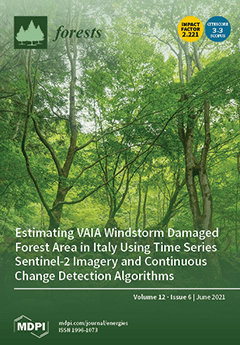Understanding the impacts of nitrogen (N) addition on soil respiration (
RS) and its temperature sensitivity (
Q10) in tropical forests is very important for the global carbon cycle in a changing environment. Here, we investigated how
RS respond to N addition in a tropical montane rainforest in Southern China. Four levels of N treatments (0, 25, 50, and 100 kg N ha
−1 a
−1 as control (CK), low N (N25), moderate N (N50), and high N (N100), respectively) were established in September 2010. Based on a static chamber-gas chromatography method,
RS was measured from January 2015 to December 2018.
RS exhibited significant seasonal variability, with low
RS rates appeared in the dry season and high rates appeared in the wet season regardless of treatment.
RS was significantly related to the measured soil temperature and moisture. Our results showed that soil
RS increased after N additions, the mean annual
RS was 7% higher in N25 plots, 8% higher in N50 plots, and 11% higher in N100 plots than that in the CK plots. However, the overall impacts of N additions on
RS were statistically insignificant. For the entire study period, the CK, N25, N50, and N100 treatments yielded
Q10 values of 2.27, 3.45, 4.11, and 2.94, respectively. N addition increased the temperature sensitivity (
Q10) of
RS. Our results suggest that increasing atmospheric N deposition may have a large impact on the stimulation of soil CO
2 emissions from tropical rainforests in China.
Full article





